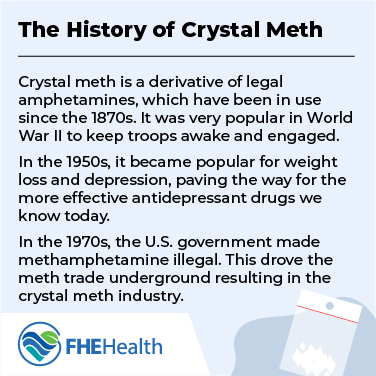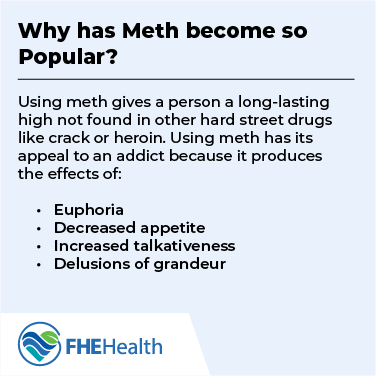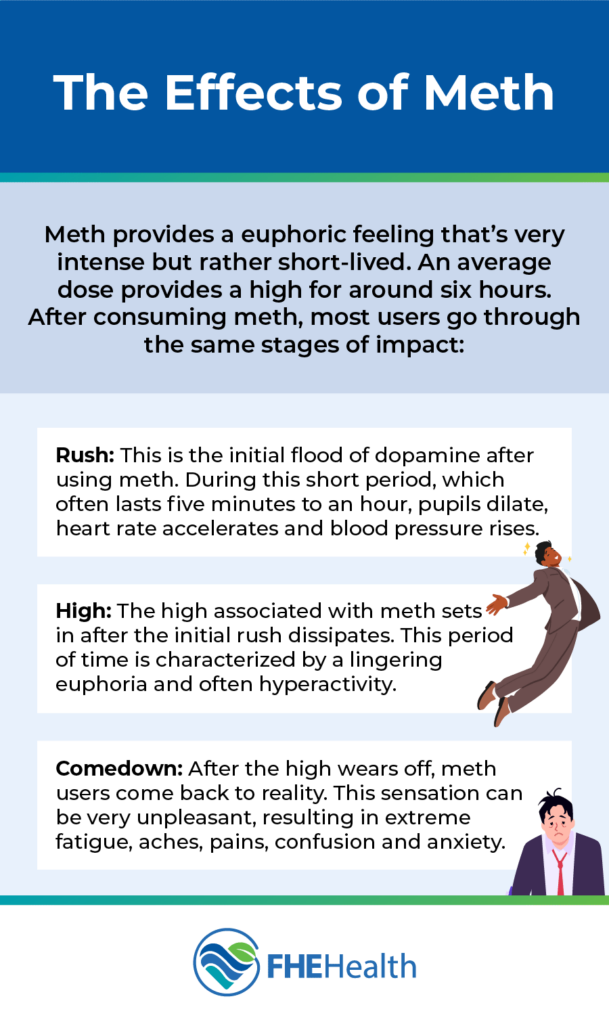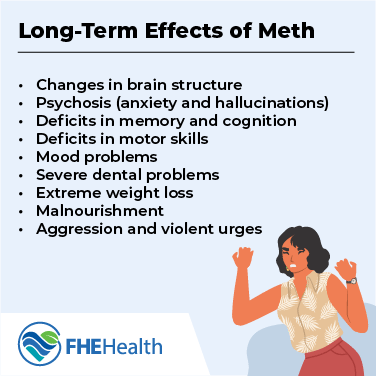Crystal methamphetamine, better known as crystal meth or simply meth, is a highly addictive drug made of a volatile mixture of household chemicals. Crystal meth affects the central nervous system, causing a powerful rush due to a flood of dopamine throughout the brain.
Unlike legal forms of amphetamines, such as those used to treat disorders like ADHD, crystal meth is a highly illegal drug and is generally only used for recreational purposes. Unfortunately, the effects of prolonged abuse can be very damaging, and substance use disorders involving meth can be extremely hard to overcome.
What Is Crystal Meth?
Crystal meth is a synthetic form of methamphetamine that is known for its glass-like look, hence the name. It’s not available in any legal form, so it’s solely sold on the street by drug dealers.
It’s derived from prescription amphetamines but provides an additional high not generally available in legal prescriptions for behavioral disorders. Due to its euphoric properties, meth is very popular among certain demographics and in several regions of the country.
Meth isn’t naturally-occurring, like some forms of opioid. Instead, it can be made in home laboratories. It often contains pseudoephedrine, a cold medicine now sold behind the counter in pharmacies to attempt to regulate its use, acetone, iodine, hydrochloric acid, lye and toluene. Many of these chemicals are found in dangerous substances like drain cleaner and brake fluid, leading to an odd combination of toxic substances.
Making meth is extremely dangerous due to the nature of the chemicals in use. Improper procedures can result in explosions and death. Most meth in the United States is produced in super-labs in Mexico, but home labs still do exist.
Due to its addictive properties, crystal meth is considered a Schedule II drug by the Drug Enforcement Administration.
 Crystal meth is a derivative of legal amphetamines, which have been in use since the 1870s. The original amphetamine was invented in Germany with its more potent sister, methamphetamine, debuting in Japan in 1919. It was very popular in World War II to keep troops awake and engaged.
Crystal meth is a derivative of legal amphetamines, which have been in use since the 1870s. The original amphetamine was invented in Germany with its more potent sister, methamphetamine, debuting in Japan in 1919. It was very popular in World War II to keep troops awake and engaged. Meth is even more addictive than the drug it was derived from, amphetamine. This is because more
Meth is even more addictive than the drug it was derived from, amphetamine. This is because more 
 Due to the nature of meth, long-term use can have serious negative consequences, including:
Due to the nature of meth, long-term use can have serious negative consequences, including:







